Abstract
Strains of Clostridium perfringens capable of producing heat-resistant spores, characteristic of the food-poisoning types, were not recovered in a random survey of feces and livers of market poultry. Favorable growth response with a known food-poisoning strain indicated that the media and methods employed were adequate. Spores produced in vitro from this strain survived at 100 C for several hours. Animal feeding experiments with this strain showed that heat-resistant spores (surviving for 1 hr at 100 C) could be readily demonstrated 24 hr after oral instillation of vegetative cells in mouse feces, but not in chicken feces. One experiment suggests that this strain might adapt to the environment of the intestinal tract of chickens, but not all of the spores recovered were as heat resistant as those of the parent culture.
Full text
PDF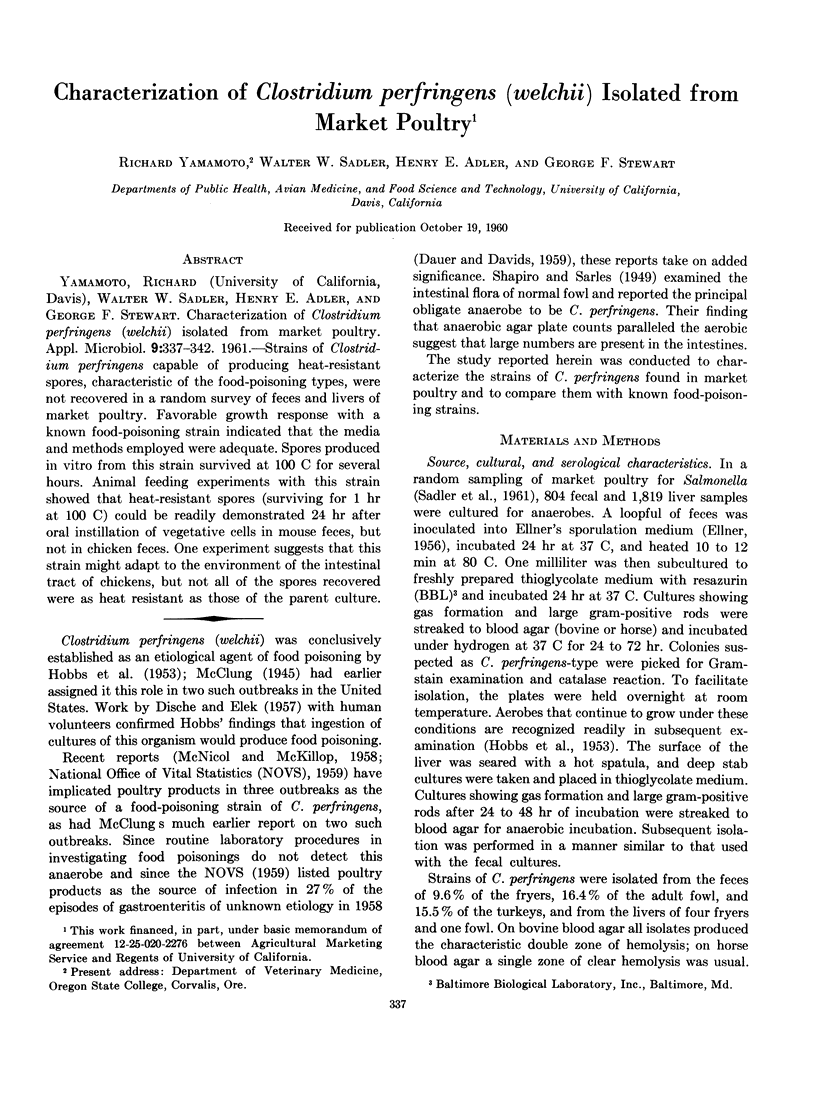
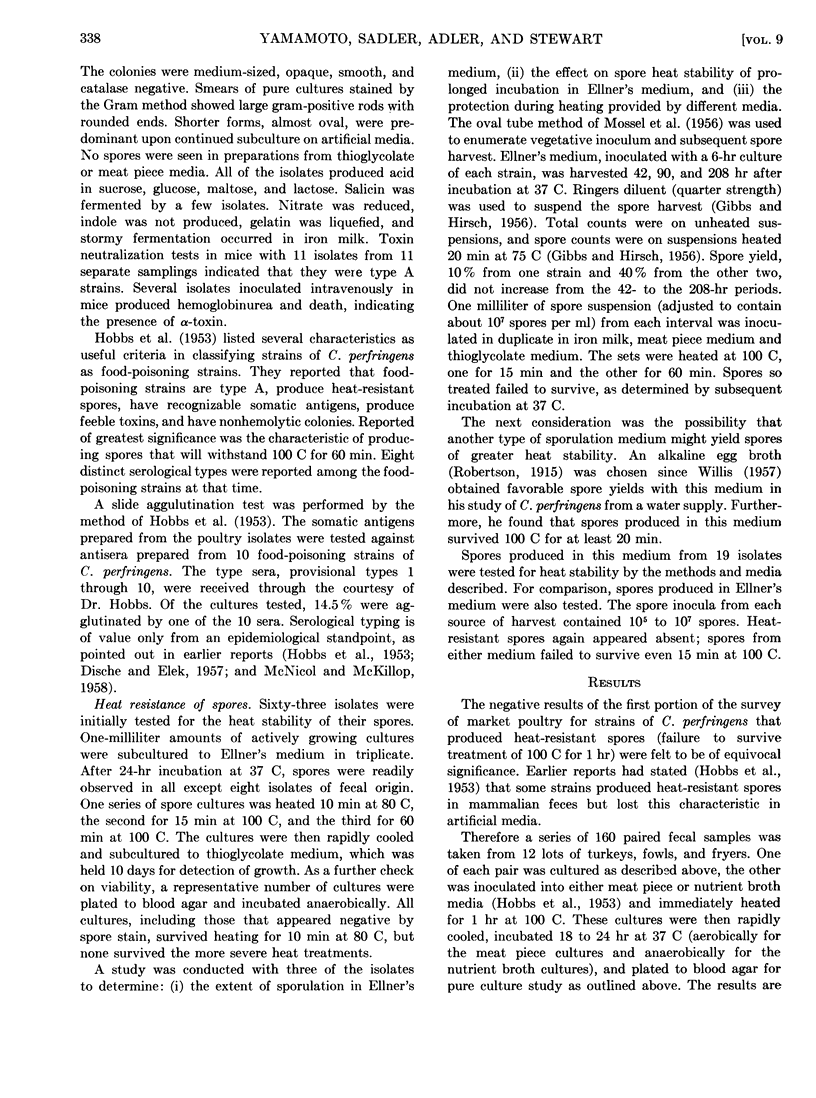
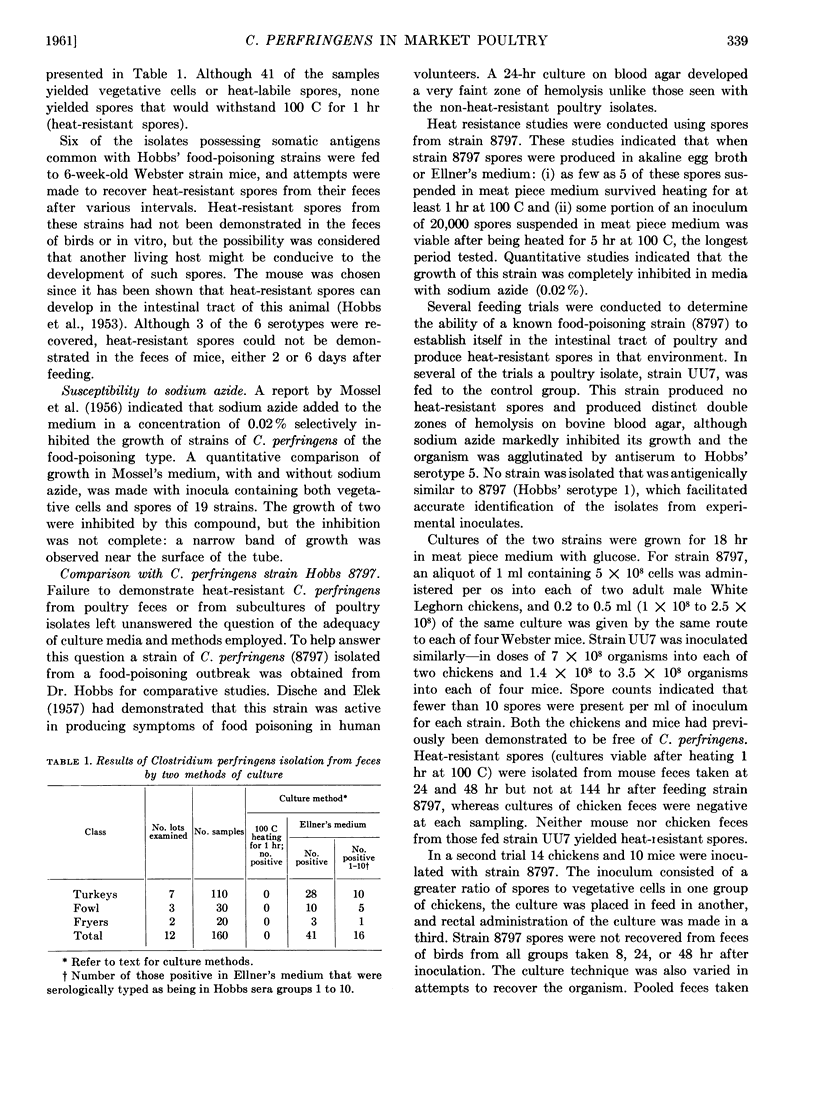
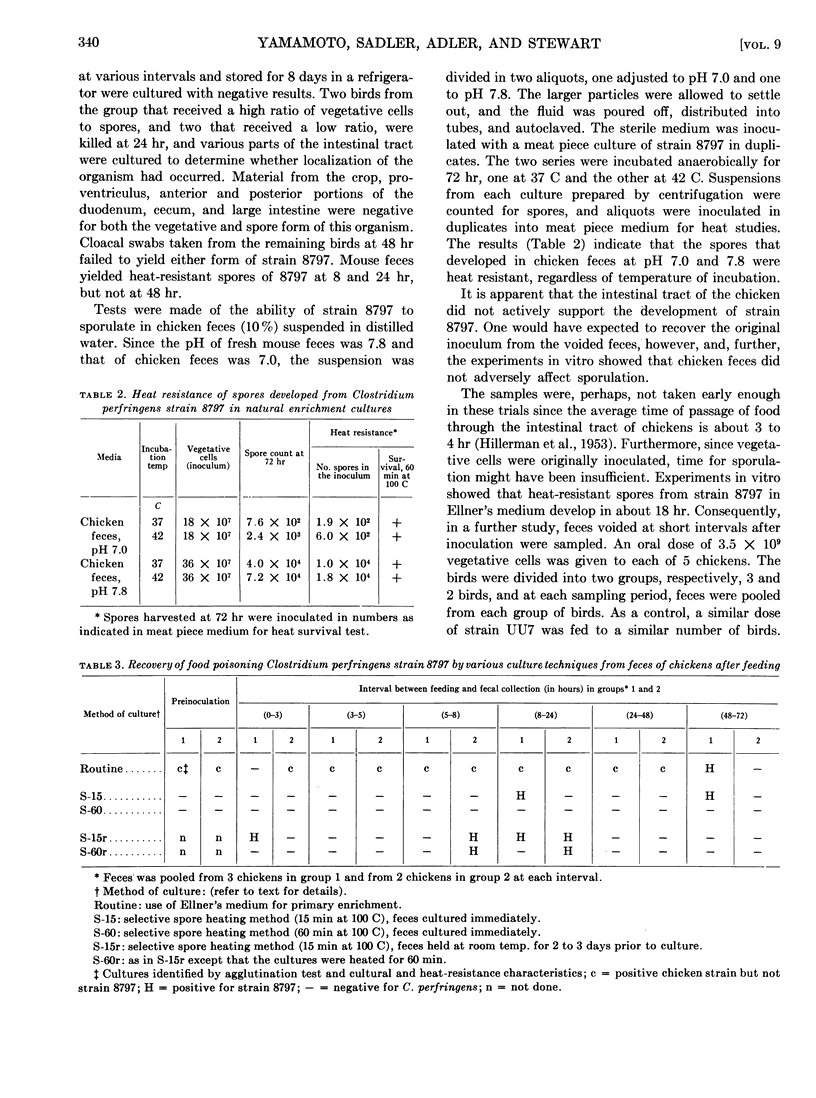
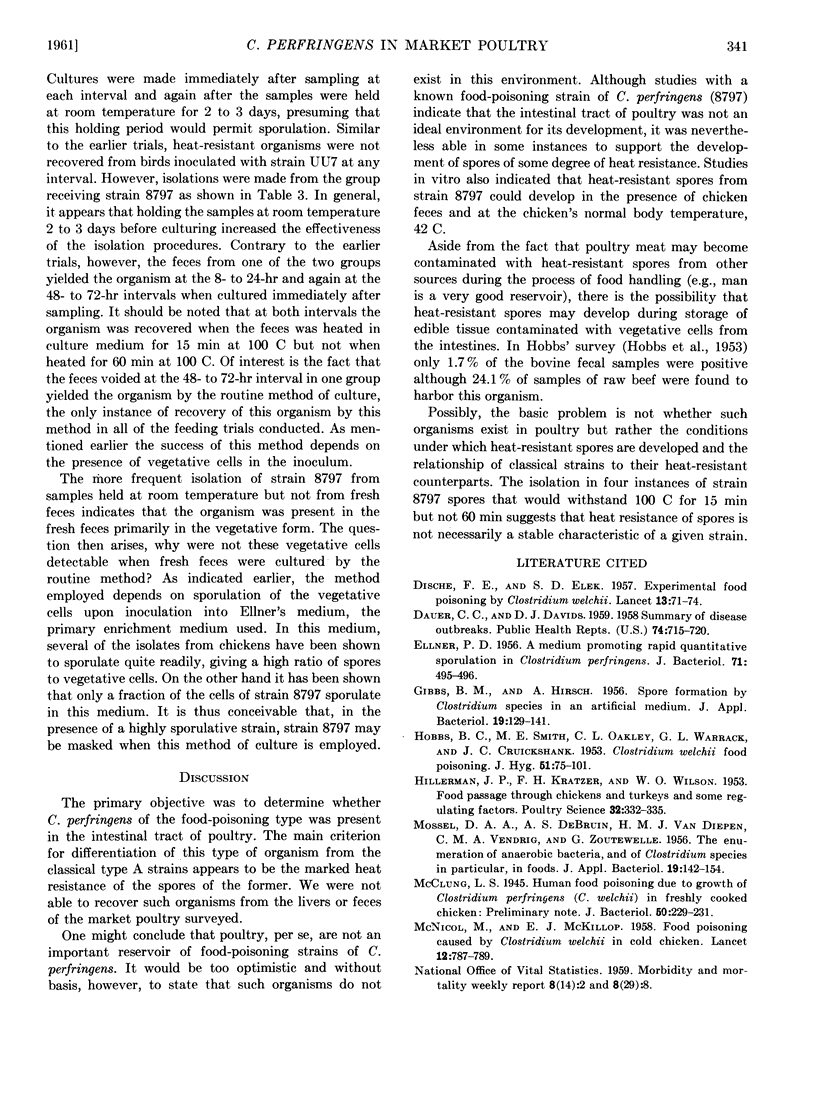
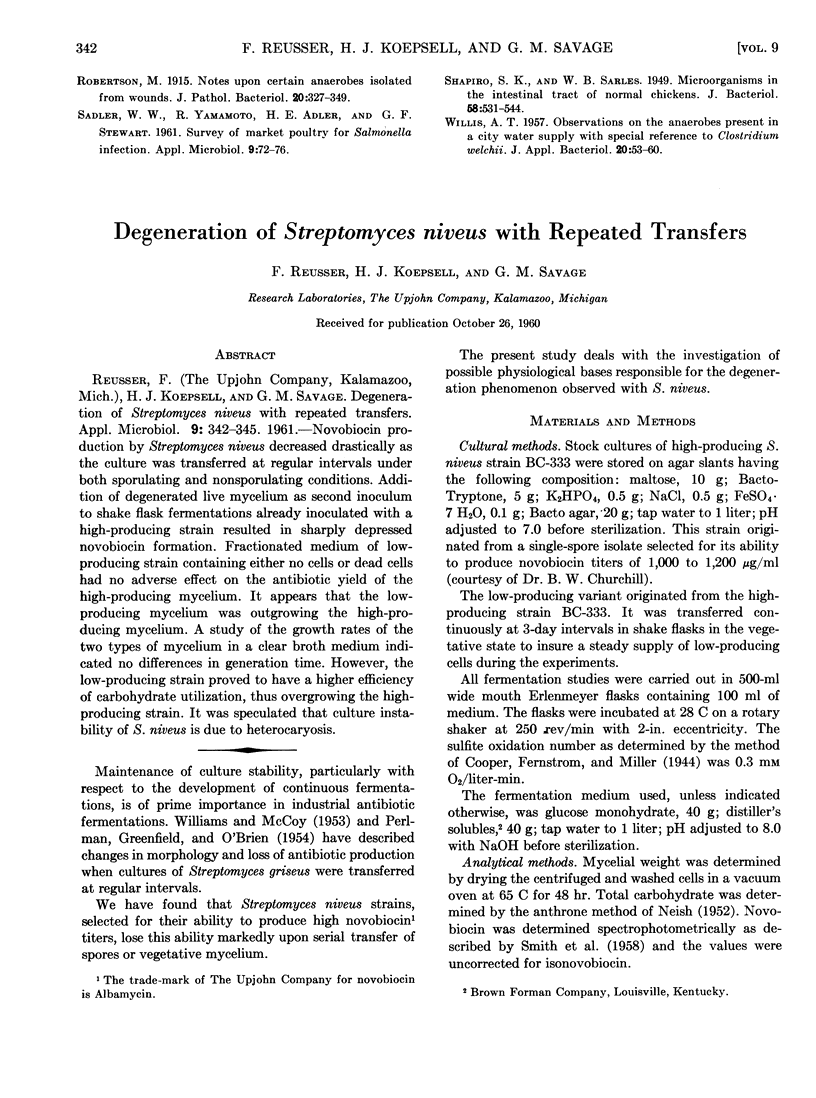
Selected References
These references are in PubMed. This may not be the complete list of references from this article.
- DAUER C. C., DAVIDS D. J. 1958 Summary of disease outbreaks. Public Health Rep. 1959 Aug;74:715–720. [PMC free article] [PubMed] [Google Scholar]
- DISCHE F. E., ELEK S. D. Experimental food-poisoning by Clostridium welchii. Lancet. 1957 Jul 13;273(6985):71–74. doi: 10.1016/s0140-6736(57)92545-x. [DOI] [PubMed] [Google Scholar]
- ELLNER P. D. A medium promoting rapid quantitative sporulation in Clostridium perfringens. J Bacteriol. 1956 Apr;71(4):495–496. doi: 10.1128/jb.71.4.495-496.1956. [DOI] [PMC free article] [PubMed] [Google Scholar]
- HOBBS B. C., SMITH M. E., OAKLEY C. L., WARRACK G. H., CRUICKSHANK J. C. Clostridium welchii food poisoning. J Hyg (Lond) 1953 Mar;51(1):75–101. doi: 10.1017/s0022172400015515. [DOI] [PMC free article] [PubMed] [Google Scholar]
- McClung L. S. Human Food Poisoning Due to Growth of Clostridium perfringens (C. welchii) in Freshly Cooked Chicken: Preliminary Note. J Bacteriol. 1945 Aug;50(2):229–231. [PMC free article] [PubMed] [Google Scholar]
- McNICOL M., McKILLOP E. J. Foodpoisoning caused by Clostridium welchii in cold chicken. Lancet. 1958 Apr 12;1(7024):787–789. doi: 10.1016/s0140-6736(58)91595-2. [DOI] [PubMed] [Google Scholar]
- SADLER W. W., YAMAMOTO R., ADLER H. E., STEWART G. F. Survey of market poultry for Salmonella infection. Appl Microbiol. 1961 Jan;9:72–76. doi: 10.1128/am.9.1.72-76.1961. [DOI] [PMC free article] [PubMed] [Google Scholar]
- Shapiro S. K., Sarles W. B. MICROORGANISMS IN THE INTESTINAL TRACT OF NORMAL CHICKENS. J Bacteriol. 1949 Oct;58(4):531–544. doi: 10.1128/jb.58.4.531-544.1949. [DOI] [PMC free article] [PubMed] [Google Scholar]


